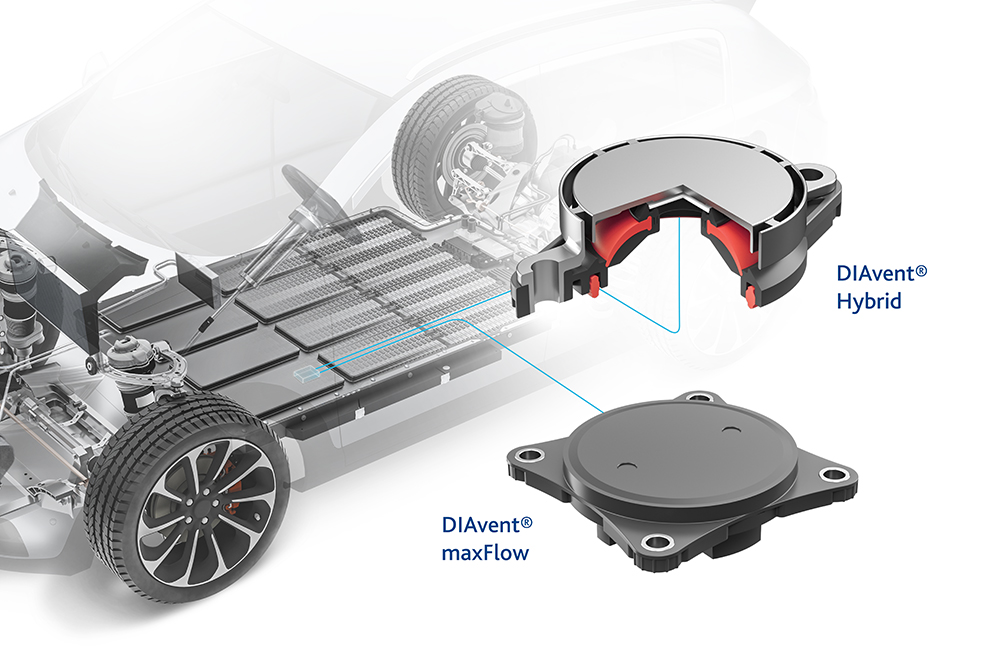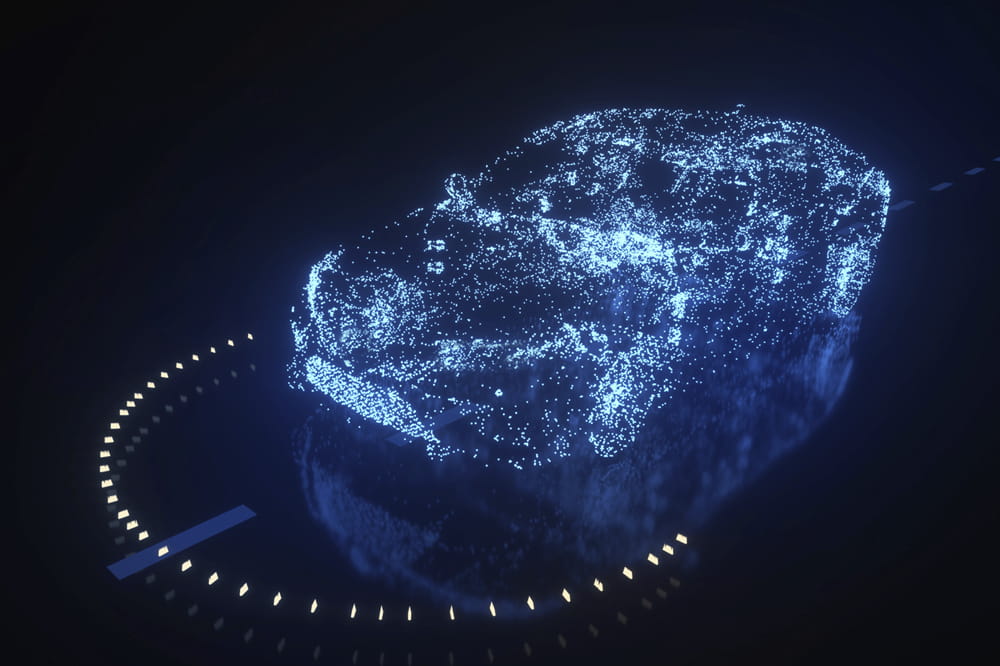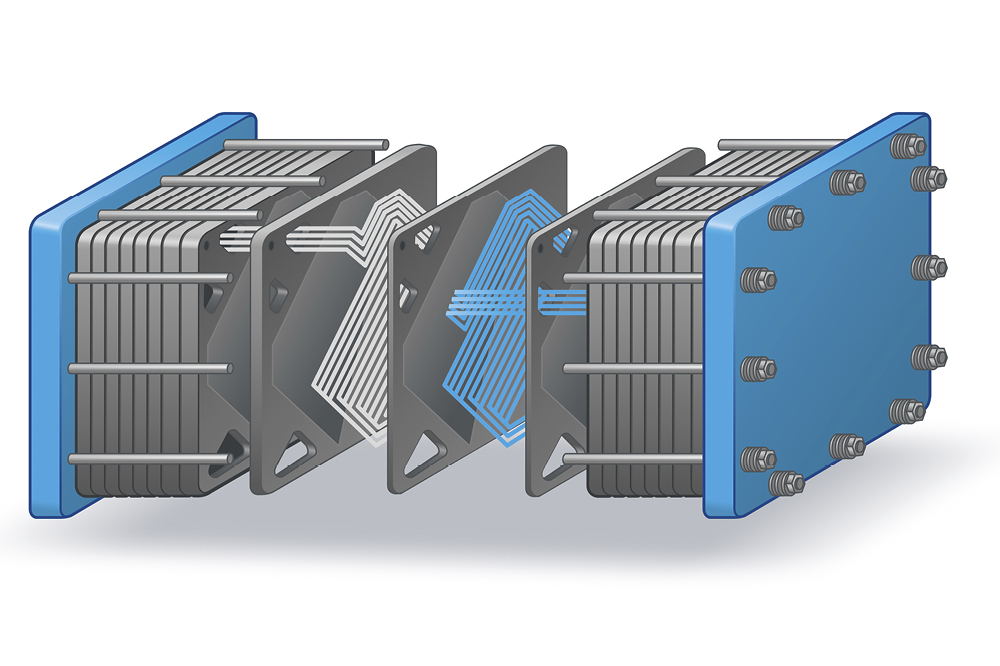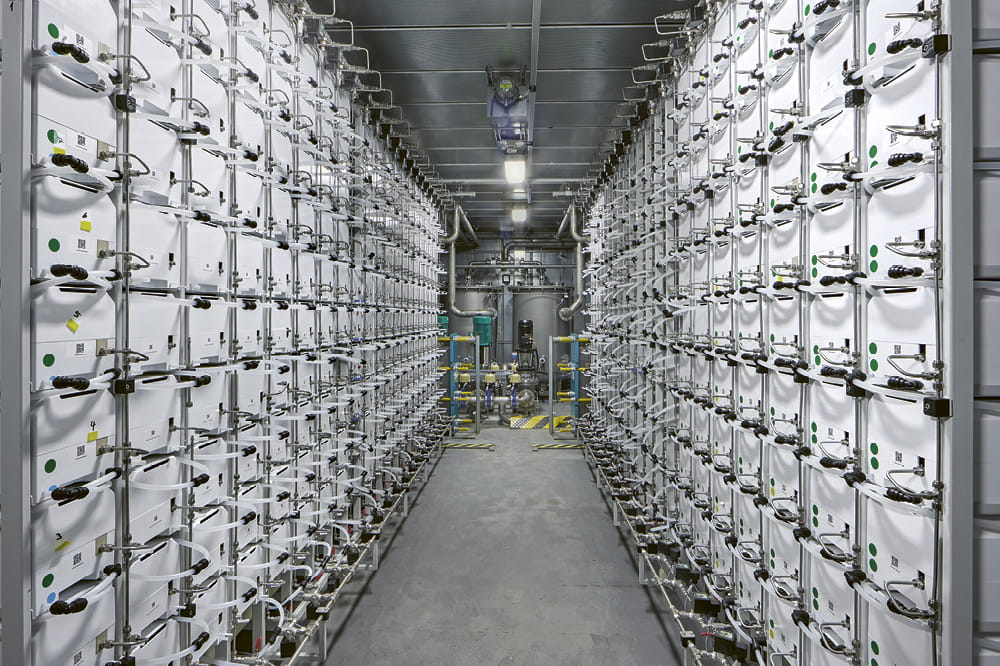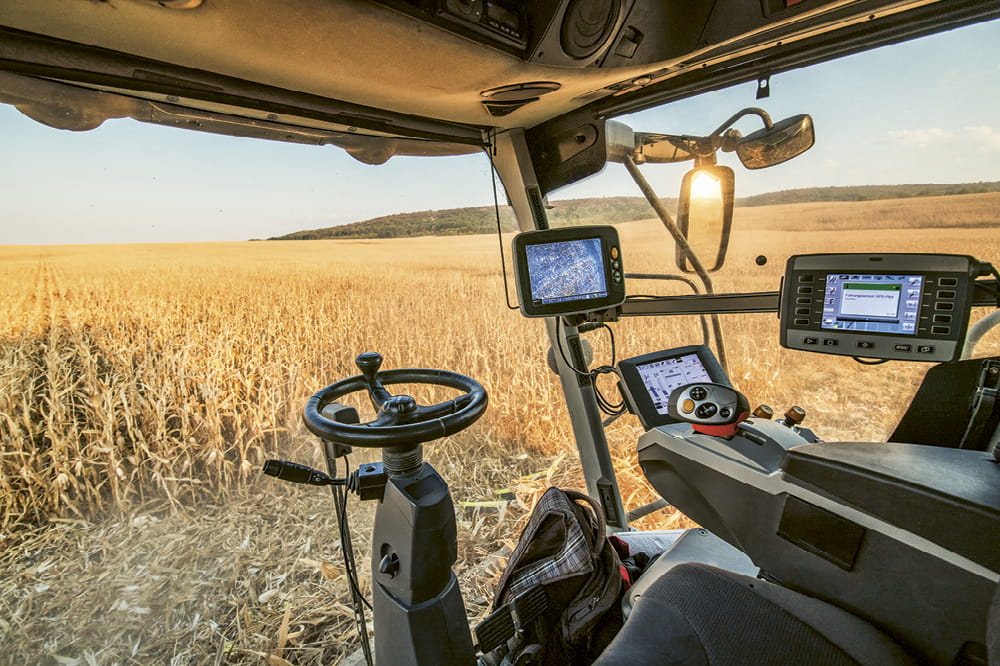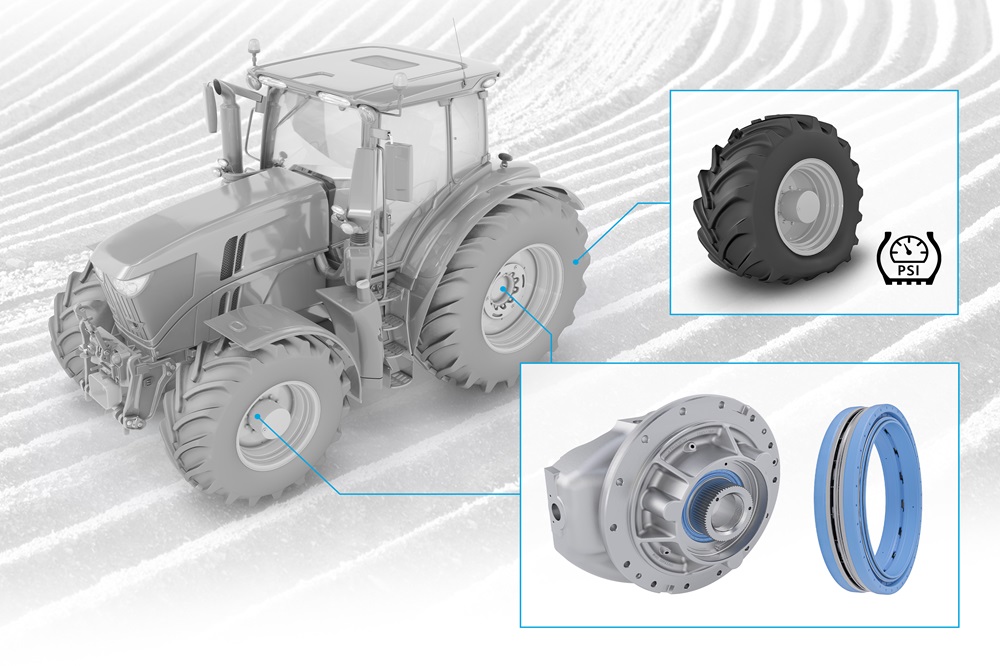Obtain news and background information about sealing technology, get in touch with innovative products – subscribe to the free e-mail newsletter.

29.11.2022 | Story
A Combination of Diverse Elements
The development of innovative materials for extreme operating conditions is a collective activity. Working as a team, Dr. Tina Andrä and Kira Truxius are helping to propel a new class of materials to a breakthrough. Along the way, they are making the case for diverse teams and an inclusive culture.
Dr. Tina Andrä Since April, chemist Tina Andrä has worked as Foresight Manager at Freudenberg Technology Innovation, focusing on materials and topics for the future such as hydrogen. She previously worked for more than five years at Freudenberg as a project manager in the material technologies field. She began her professional career as a lab manager at BASF Polyurethanes GmbH.
Organic chemists study the structure, properties, and reactions of molecules that contain carbon. They also design and make new organic substances that have unique properties and applications. These compounds, in turn, have been used to develop many commercial products, such as pharmaceutical drugs and plastics. Organic chemistry is the branch of chemistry that deals with carbon compounds, and there are countless compounds to be explored. Each new organic compound dazzles with unique properties that only result from a particular molecular structure. It is no different with teams: Where people are allowed to develop and can contribute their viewpoints and strengths, they produce more innovations in a shorter time. That is the reality, and the collaboration between chemist, Tina Andrä, and plastics engineer, Kira Truxius, shows that the development of innovative materials depends on it.
Working together, they have pressed ahead with the development of a new class of plastics that had not previously existed. Even at temperatures of more than 1,000°C (1,832°F), the material known as “Quantix® ULTRA” does not melt. When the two experts are both at work in the technical center, where new materials are mixed and processed into granulate, people don’t realize that they actually work for two different companies within the Freudenberg Group. Andrä coordinates research into future materials for Freudenberg Technology Innovation, while Truxius looks for new thermoplastic applications for Freudenberg Sealing Technologies.
Despite the differences, the life journeys of the two women have parallels. Andrä’s love for chemistry began in childhood when she browsed through the library of her grandfather, a chemistry teacher. The structure of complex molecules was merely a source of fascination in the beginning. Her understanding grew, however, when she began taking science classes in school. After graduating from high school, she continued her education in chemistry at the Chemnitz University of Technology. In Truxius’ case, it was initially her grandfather, a metallurgical engineer, who sparked her interest in technology. He and his granddaughter repaired vintage devices from a flea market. She was excited by the way tools are used. When she was still in primary school, she bought a pinball machine for 150 Deutschmarks. As it no longer worked, her interest in doing repairs was aroused. To this day, one of her hobbies is restoring and repairing pinball machines. The fact that Truxius ultimately chose to study plastics technology at the Darmstadt University of Applied Sciences has its roots in an earlier detour: She started college with the goal of becoming a dental technician, a career that would have involved using many malleable materials. She enjoys working with them – especially thermoplastics – and wants to build up her knowledge about them.
That allowed us to gather everyone’s experience and knowledge and make rapid progress.
Kira Truxius, materials expert specializing in thermoplastics
Kira Truxius Since 2015, graduate engineer Kira Truxius has worked for Freudenberg Sealing Technologies as a materials expert in the thermoplastics field. She previously completed her master’s degree in plastics technology at the Darmstadt University of Applied Sciences. She also does volunteer work with the moveMINT (STEM) program at the University of Mannheim.
A Uniting Theory and Practice
Early on, both women decided to tie their studies to practical applications. Andrä worked on her graduate thesis in a BASF applicationsoriented research project. For her part, Truxius joined Celanese (the former Hoechst company) as a workstudy student and wrote her bachelor’s and master’s theses there. Even back then, she found materials development to be especially exciting, seeing the field as the intersection of chemistry and mechanical engineering. While Truxius joined Freudenberg right after she completed her studies, Andrä first earned her doctorate and then joined BASF Polyurethanes in Lemförde. For personal reasons, she was soon looking for a position in southern Germany and started at Freudenberg one year after Truxius.
In 2019, the Freudenberg Group relaunched a strategic program and called on six of its subsidiaries to combine forces and look for new materials for use in extreme operating conditions. Andrä took over overall coordination, a task that suited her sober, analytical nature. One area of exploration involved electric powertrain plastics that are resistant to high temperatures. Truxius led and coordinated the program at Freudenberg Sealing Technologies’ end. “We were all equal, whether in the technical center, in the lab or in a testing facility, including the experienced employees operating equipment day in and day out,” Truxius recalled. “That allowed us to gather everyone’s experience and knowledge and make rapid progress.”
A New Class
With “Quantix® ULTRA,” Freudenberg Sealing Technologies is introducing a new class of plastic materials that neither melt nor catch fire at very high temperatures. Semi-crystalline thermoplastics first show a slight reduction in rigidity when they are heated. If a particular temperature is exceeded – which experts call the glass transition temperature – the plastic gradually softens and is significantly less rigid. If the temperature continues to rise, the material eventually reaches its melting point. But “Quantix® ULTRA” exhibits a significantly higher glass transition temperature where rigidity declines. Instead of becoming softer as the temperature rises and ultimately melting, the material becomes as elastic as an elastomer. In one lab test, a sample of the material less than 1 millimeter thick survived for 10 minutes in a flame reaching 1,200°C (2,192°F).
Appreciation Makes the Difference
And yet it was not just measurable knowledge that contributed to success. The two experts got along well right from the start and appreciated each other’s work. Here is what Truxius says about Andrä: “She greatly appreciates all the team members but never loses sight of the big picture. She knows what to do.” For her part, Andrä values her coworker’s technical knowledge as well as her enthusiasm and persistence. “Kira makes sure that nothing goes astray.” Andrä and Truxius look with pride at the new material group, “Quantix® ULTRA.” It would never have come about without a large team and mutual support, they say.
Andrä and Truxius are dealing with a reality at Freudenberg: As women, they are still in the minority in technical-scientific positions in 2022. “It’s not just about gender diversity,” said Truxius, who almost exclusively encountered male classmates and professors while in college. “We have to become even more diverse.” Individuals can make a difference. For example, Truxius champions diversity and inclusion at Freudenberg and offers insights into the worlds of the LGBTQIA+ community, rainbow families and STEM women. The signing of the Charter of Diversity, in which Truxius participated, obligates Freudenberg to recognize diversity inside and outside the organization, value its potential, and harness it for the company’s benefit. Diversity gives you an edge – and not just in organic chemistry. Truxius is also involved in the STEM program at the University of Mannheim on Freudenberg’s behalf, smoothing the path for women in STEM fields as they start their professional lives. In the future, she would like to build children’s interest in STEM careers.
Learn more about our material expertise at Freudenberg Sealing Technologies: https://www.fst.com/corporate/expertise/material-expertise/
This article originally appeared in ESSENTIAL, Freudenberg Sealing Technologies’ corporate magazine that covers trends, industries and new ideas.
More news on the subject Technology & Innovation

Join Us!
Experience Freudenberg Sealing Technologies, its products and service offerings in text and videos, network with colleagues and stakeholders, and make valuable business contacts.
Connect on LinkedIn! open_in_new




